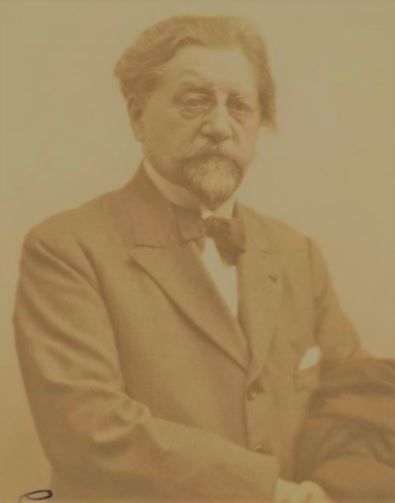has not been as widely recognized in the world's understanding of the history of art. His talent
merits his work and name being much better recognized.
In Laermans childhood, he was struck deaf by illness (he suffered both meningitis and typhoid). This handicap caused him to lead a somewhat reclusive existence.
More tragedy befell him as time passed. In 1924, he ceased painting completely as his
vision started fading. He spent the last 13 years of his life in total darkness. He lost his sight completely by 1927.
He painted scenes of social unrest and the misery of peasant life. Due to his own physical
troubles, he empathised with the poor, the disabled and the outcast. He did not allow these
depressing themes to drag his work into total darkness.
His paintings feature the vast, flat landscapes of Belgium, dotted with villages populated
by little white cottages, surrounded or bisected by reflective rivers and streams,
wind-beaten trees, dramatic (but gloomy) skys, and the beautiful colours of autumn.
He depicted criminals, the blind, the naked and the poor, but looking at his works, it is easy
to think the biggest adversity his people face is nature. His artwork also stressed the weather,
along with the immense landscape in which these people (shown in the artwork) trudge
and toil.
His paintings are melancholy but their large scale, his eye for dramatic composition and the
rich colours he employed, lift his artwork's subjects. His large crowd scenes, often labour under
overt political messages.
This biography is humbly presented by Audrey Burtrum-Stanley / Arkansas
has not been as widely recognized in the world's understanding of the history of art. His talent
merits his work and name being much better recognized.
In Laermans childhood, he was struck deaf by illness (he suffered both meningitis and typhoid). This handicap caused him to lead a somewhat reclusive existence.
More tragedy befell him as time passed. In 1924, he ceased painting completely as his
vision started fading. He spent the last 13 years of his life in total darkness. He lost his sight completely by 1927.
He painted scenes of social unrest and the misery of peasant life. Due to his own physical
troubles, he empathised with the poor, the disabled and the outcast. He did not allow these
depressing themes to drag his work into total darkness.
His paintings feature the vast, flat landscapes of Belgium, dotted with villages populated
by little white cottages, surrounded or bisected by reflective rivers and streams,
wind-beaten trees, dramatic (but gloomy) skys, and the beautiful colours of autumn.
He depicted criminals, the blind, the naked and the poor, but looking at his works, it is easy
to think the biggest adversity his people face is nature. His artwork also stressed the weather,
along with the immense landscape in which these people (shown in the artwork) trudge
and toil.
His paintings are melancholy but their large scale, his eye for dramatic composition and the
rich colours he employed, lift his artwork's subjects. His large crowd scenes, often labour under
overt political messages.
This biography is humbly presented by Audrey Burtrum-Stanley / Arkansas
Sponsored by Ancestry
Advertisement
Records on Ancestry
Sponsored by Ancestry
Advertisement





